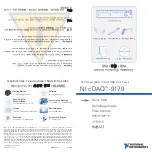
8
Login method
Default state
By default, you can log in to a device through modems. The default user
privilege level of modem login users is 3.
By default, you can log in to a device through web. If the web function is
disabled, you need to log in to the device through the console port, and
complete the following configuration:
•
Configure the IP address of the management Ethernet interface of the device,
and make sure the device and web terminal can reach each other (by
default, the IP address of the management Ethernet interface is
192.168.0.1/24.).
•
Configure a username and password for web login (by default, the username
and password are admin).
•
Configure the user privilege level for web login (by default, the user privilege
level is 3).
•
Configure the web service type for web login (not configured by default).
By default, you cannot log in to a device through a network management station
(NMS). To do so, log in to the device through the console port, and complete the
following configuration:
•
Configure the IP address of the management Ethernet interface, and make
sure the device and the NMS can reach each other (by default, the IP address
of the management Ethernet is 192.168.0.1/24. ).
•
Configure SNMP basic parameters.
User interface overview
User interfaces, or lines allow you to manage and monitor sessions between the terminal and device
when you log in to the device through the console port, AUX port, or through Telnet or SSH.
Asynchronous serial interfaces include the following types:
•
Synchronous/asynchronous serial interface operating in asynchronous mode, whose interface
index begins with
Serial
.
•
Dedicated asynchronous serial interface, whose interface index begins with
Async
.
One user interface corresponds to one user interface view where you can configure a set of parameters,
such as whether to authenticate users at login, whether to redirect the requests to another device, and the
user privilege level after login. When the user logs in through a user interface, the parameters set for the
user interface apply.
At present, the system supports the following CLI configuration methods:
•
Local configuration via the console port
•
Local/Remote configuration via the AUX port (Auxiliary port)
•
Local/Remote configuration through Telnet or SSH
The methods correspond to the following user interfaces.
•
Console user interface: Used to manage and monitor users that log in via the console port. The type
of the console port is EIA/TIA-232 DCE.
•
AUX user interface: Used to manage and monitor users that log in via the AUX port. The type of the
AUX port is EIA/TIA-232 DTE. The port is usually used for modem dialup access.





































